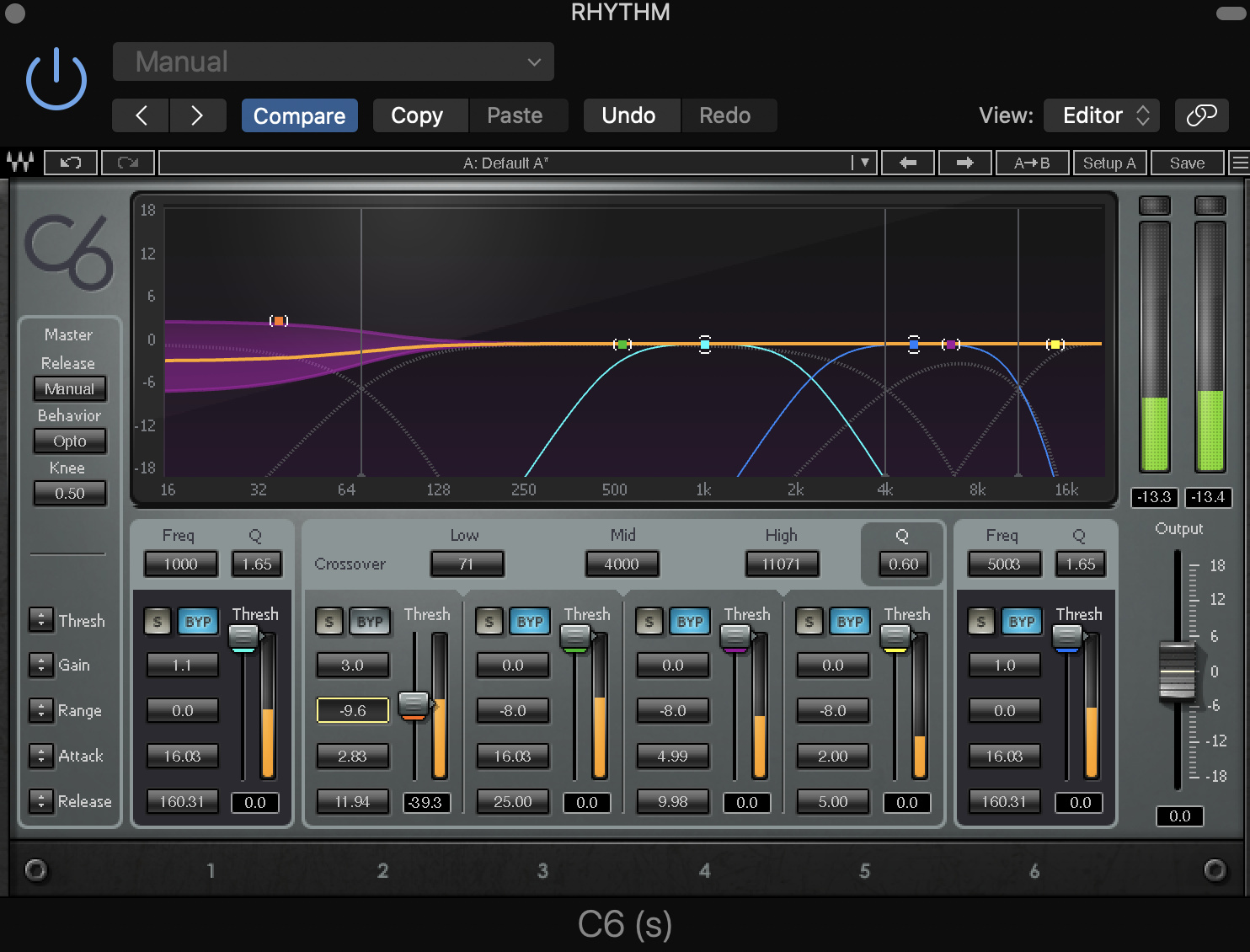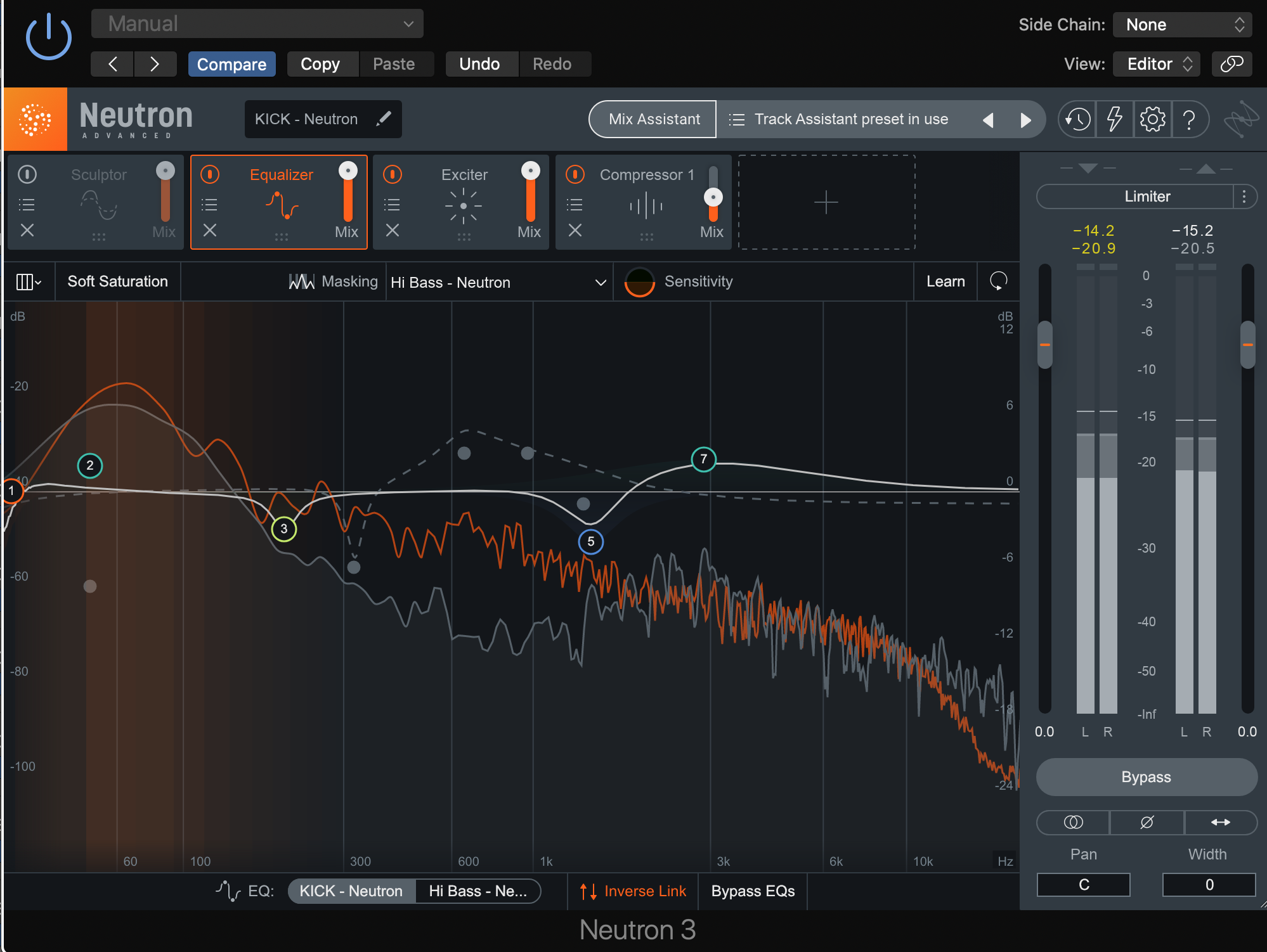Mixing the low end of your song is probably one of the more challenging parts of crafting a professional mix.
You probably know the benefits of mixing several different instruments together to help "glue" together a sound, so you're wondering...
Should you compress the bass and kick together?
Compressing your bass and kick together is a good idea because it can help to glue your low end together. It's also a great idea to use multiband compression when mixing your bass and kick so that you have more control over the compression.
Why Is Compression Important For Low End?
The goal for mixing your low end if you are making modern music is to create a very consistent sound.
You don't want any sudden changes in volume of the low end, and to achieve this, compression is needed.
Because of this need for a very consistent sound, you'll want to be more aggressive with the compression.
Your bass and kick will probably be the most compressed sounds in your mix.
Compressing The Kick And Bass Separately

Before compressing your kick and bass together, it's a good idea to first add some compression separately on each of these instruments
Compressing The Kick
Setting the attack time for compressing your kick can be tricky.
Too fast, and you lose the sharp attack of the beater.
Too slow, and the compressor won't engage fast enough to control the kick. (After all, the kick is already a very transient sound on its own.)
Therefore, it can be a good idea to start with a medium time and increase the attack time (faster) until you notice that the kick loses some of it's puchiness.
At this point, dial back the attack time a tad (slower) until you are happy with the amount of attack.

Create Better Songs, Faster
Click below to download my free song-finishing checklist to help you create radio-ready songs without taking months to complete them.
Compressing The Bass
Compressing the bass depends on what kind of bass you have.
If the notes are long and sustained, you don't want a fast release time, as this wont control the entire sound, and will cause an awkward and noticeable pumping sound.
If you have a more transient and shorter bass sound, then you can follow the same steps for compression here as you did for compressing the kick.
How Do You Compress a Kick and Bass Together?
By mixing the kick and bass together, you will create a tighter and more unified sound.
However, it's key to not be too aggressive, as it can be difficult to dial in the attack and release times correctly.
You also will want only about 2-3dB of gain reduction, as that will be enough to add glue to your low end.
To achieve this, send the kick and bass to a group buss and add compression there.
Heavily Compress the Low End of The Bass

Another thing you can do to help control and smooth out your low end is to heavily compress the sub lows.
You can use a multiband compressor to do this, so that you're only targeting the very low end.
By heavily squashing the lows, you'll provide your track with a very consistent and powerful low end without ruining the dynamics of the bass part.
Try compressing everything below 80Hz and opting for 5dB+ of gain reduction.
How To Keep The Bass & Kick From Fighting Each Other
Even with this compression, you may find that your kick and bass are still competing with each other, and masking one another, resulting in a lack of clarity.
There are a couple of tricks you can implement to prevent this.
Use Sidechain Compression

A very popular trick, especially in electronic music, is to use side-chain compression on your bass, so that it "ducks" in volume when the kick comes in.
This allows your bass to shine in between kick hits, but it wont mask the kick when it comes in.
The result is a clear kick and bass which don't compete with each other.
To set this up;
- Add a compressor to the bass and then sidechain it to the kick
- Next, dial in 2-3dB of gain reduction every time the kick hits, and start with a fast attack time and a medium release.
Or, if you want to get more of a "pumping" sound from your bass, just dial up the gain reduction.
Create Inverse EQ Curves
You can also set up inverse EQ curves on your bass and kick, so that the frequency ranges that you want shine through for your kick are being cut on the bass, and vice versa.
The way this works is you make sure not to boost or cut the same frequencies on each instrument.
For example, if the bass is boosted around 600Hz-1kHz, you don't also boost the kick there.
If the kick is hitting strong around 100Hz, you cut the bass at that section.
A tool like iZotope's Neutron 3 makes it really easy to see where your instruments are masking each other, and create inverse EQ curves to clear that up.
Finish Mixes Faster
Creating a tight, glued together low end will go a long way toward creating better sounding mixes.
But creating stunning low end is just part of the mixing battle.
If you’re wanting to finish better quality music, faster, then grab my free song-finishing checklist below.

Create Better Songs, Faster
Click below to download my free song-finishing checklist to help you create radio-ready songs without taking months to complete them.
This will walk you through a proven mixing and mastering formula, step-by-step, so you can cut out the fluff and get down to what’s going to make your tracks “radio ready”.
I hope you found this post on, “Should you compress bass & kick together”, helpful!
If so, feel free to share, and let me know in the comments below…

